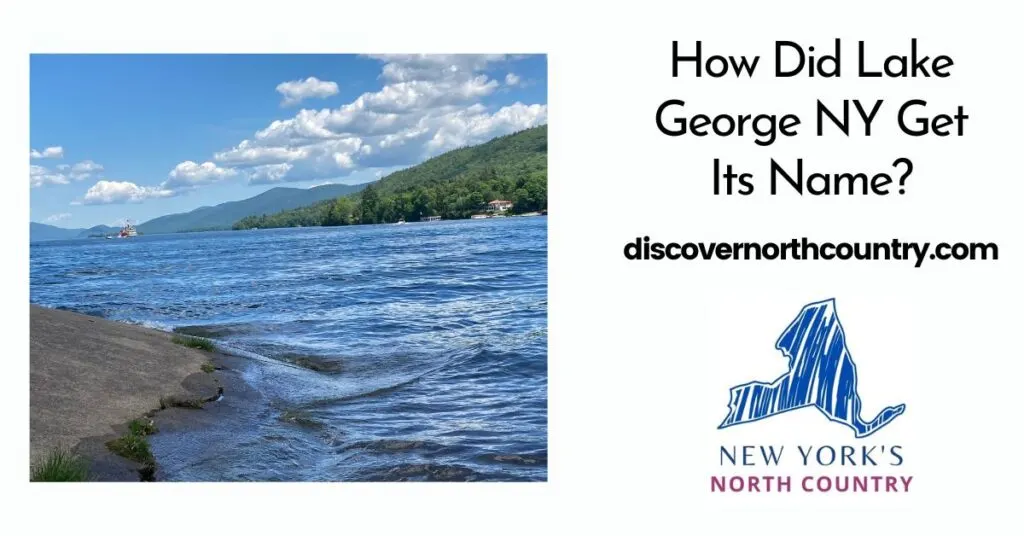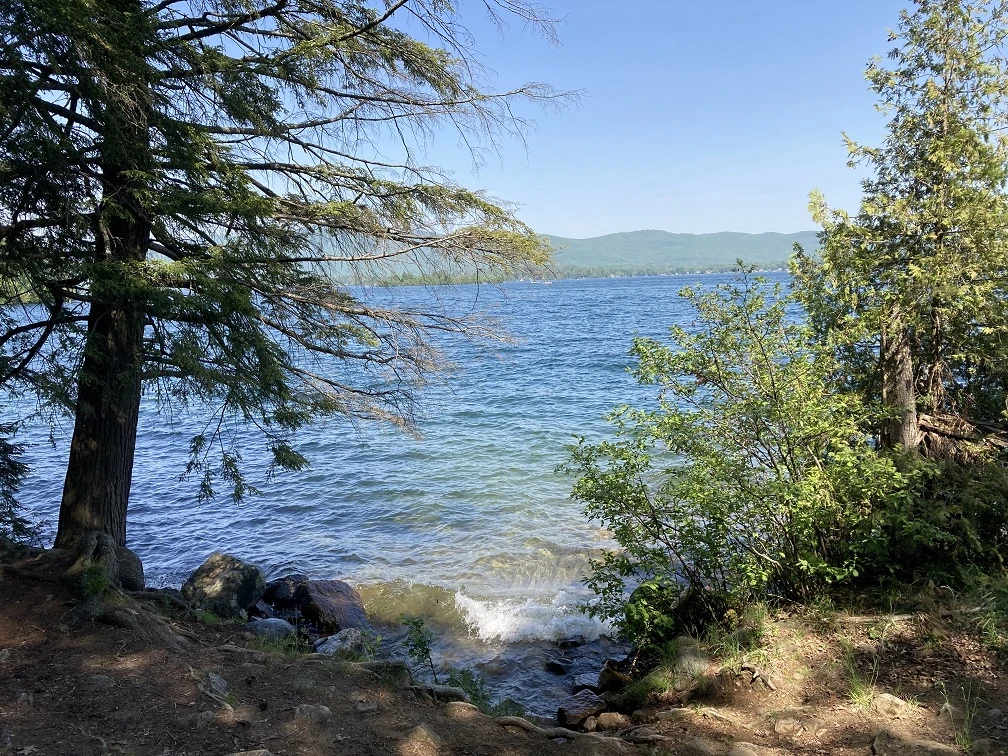You know that the Lake George is a beautiful vacation spot, but do you know how it got its name? Here, you will find out the answer, as well as learn its two other – much older – names.
The first time that I saw Lake George, I couldn’t believe my eyes. It is a picture-perfect, deep blue lake in a stunning mountain landscape.

The lake is home to many small towns and villages, including the Town and Village of Lake George, and plenty of things to do. As you might naturally assume, both the town and the village were named after Lake George.
But, how did the lake come to be called “Lake George”?
Who is Lake George named after?
Lake George was named in 1755 by a man named Sir William Johnson, the 1st Baronet of New York. The name Lake George, which was to honor King George, III, was chosen about a month before the battle of Lake George.
William Johnson was of Irish birth, but he was able to move up in the British Navy and eventually immigrated to the British North American colonies. He spent a lot of time with the Mohawk people near Lake George during his time managing his uncle’s estate.
He had a great number of children with several different women, including Catherine Weissenburg and Molly Brant, and is buried in Johnstown, Fulton County, New York.

How did Lake George form?
Lake George is a natural lake that was formed about 10,000 years ago by the receding Wisconsin Glacier. This large glacier was a few kilometers thick, and created Lake George as it scraped the landscape and caused erosion from melting ice.
Is Lake George a man-made lake?
Even though Lake George is not a man-made lake, it’s size and depth has been altered by human activity. There is a dam on the northern end of the lake located at the town of Ticonderoda, NY, that has raised the level of the lake by an estimated 2-3 feet.
The water in Lake George flows from south to north, which might surprise some people. However, the quickest way to the ocean from Lake George is north via the La Chute River to Lake Champlain, which flows through the Richelieu River into the St. Lawrence River and then into the Gulf of St. Lawrence and the Atlantic Ocean.
Who discovered Lake George?
Lake George was discovered by Native American people who had been living in the southeastern part of the Adirondack mountains, a land of many lakes, for many thousands of years. When the Europeans began explorations and invasions of North America in the 1500s, the Mohawk and Mohican people were well-established in this region.
Due to the size and strategic location of Lake George along a historic indigenous footpath, it is likely that this lake was very well-known to the inhabitants of the greater area.
The first European person to mention Lake George was Samuel de Champlain, who, coincidentally, had his own lake named after him, but we don’t know if he saw Lake George with his own eyes. However, we do know that Isaac Jogues, a Jesuit missionary, did see the lake.
It was Isaac Jogues who gave Lake George its first name from a European language.
What was Lake George called before?
Before the Jesuit missionary Jogues chose a name for Lake George, it had long been called Kaniá:taro’kte, which means “lake end” in the Mohawk language. The lake was also known as Andia-ta-roc-te, a name which describes the mountains surrounding the lake, in the Mohican language.
In 1646, Isaac Jogues, the missionary, named the lake Lac du Saint-Sacrement (Lake of the Holy Sacrament). He also named the stream that leaves the lake “La Chute”.
Of course, we know that the French name for the lake was lost to history. However, the exit stream is still called La Chute today, almost 400 years later.
Even though most people know the lake as Lake George, it is important to acknowledge that the lake retains its indigenous name to the Mohawk people, who still live New York State.
Conclusion
I hope that this post has helped you learn all that you wanted to know about the history of the names of Lake George. No matter what we call it today, it’s a beautiful lake that is a wonderful place to spend a few days.
If you have any questions about something that you read here, be sure to join in the comments below.
Thanks for reading!
